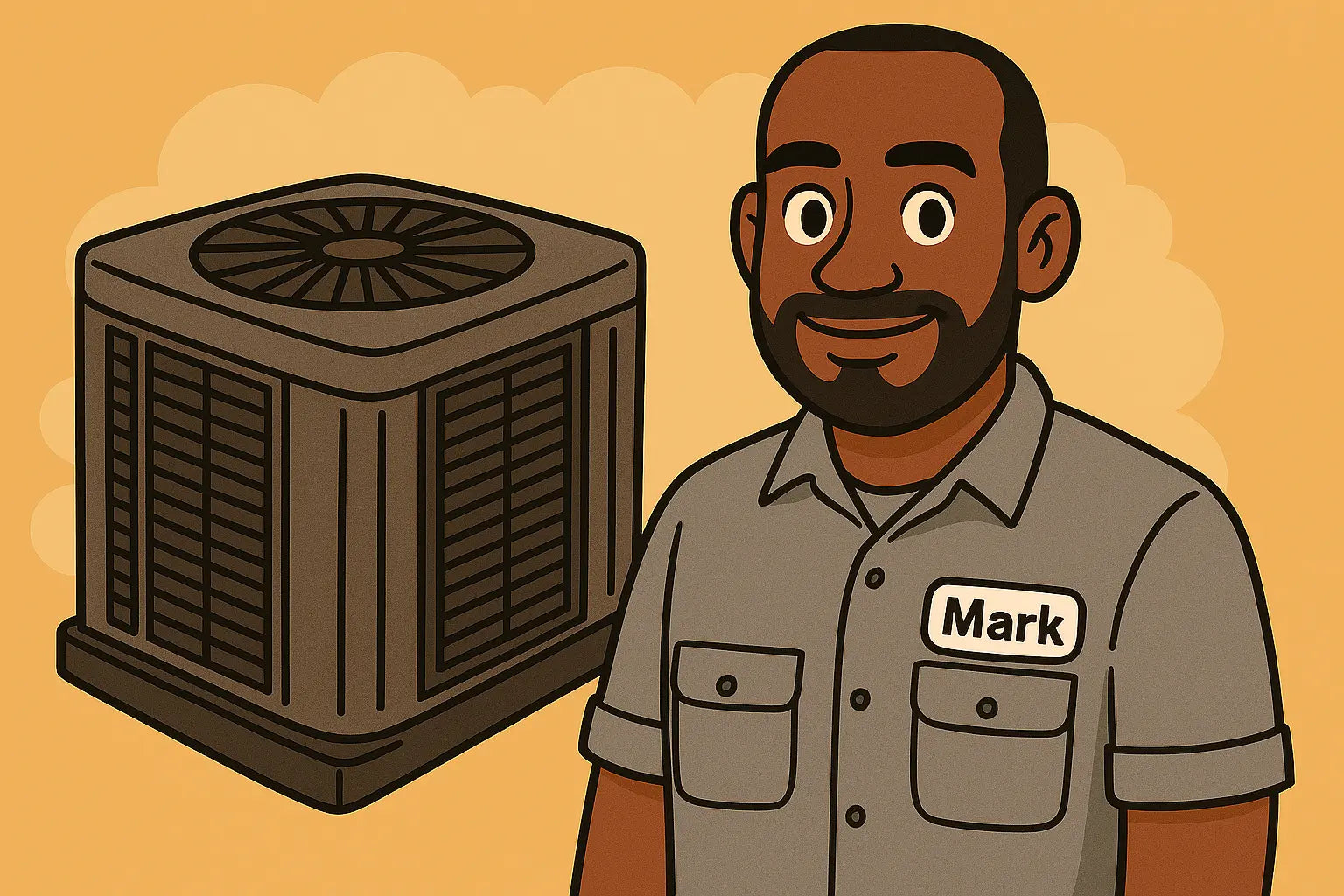Hey There Friend!
Installing a new air conditioner, especially something as reliable as the Goodman GLXS4BA3610, feels like reaching the finish line. But the real test comes the moment you flip that breaker and initiate power. For homeowners and pros alike, understanding the correct startup sequence helps prevent avoidable issues like short cycling, locked compressors, or thermostat confusion.
In this guide, we’ll walk you through exactly what should happen—and what shouldn’t—when powering on your R-32-charged, 3-ton 14.5 SEER2 system for the first time.
🟢 Step-by-Step: What Should Happen After Power-On
✅ 1. No Loud Noises
After flipping the breaker, you should not hear any loud humming, buzzing, or clicking. What you might hear is a brief relay click from the contactor or a subtle hum from the transformer in the air handler. Silence is not a red flag in this phase—it means your system is stabilizing and waiting for a signal from the thermostat.
✅ 2. 24V Control Voltage Establishes
Power feeds from your breaker panel to the contactor and control board. Once energized, your 24V control transformer (typically located inside the AMST36CU1300 air handler) provides the voltage needed to operate the thermostat and communicate with the condenser.
If you have a smart thermostat like an ecobee or Nest, it may boot up with a welcome screen during this step.
✅ 3. Thermostat Calls for Cooling
When you drop the temperature on your thermostat, it sends a signal to the air handler and outdoor unit. Here’s what happens next:
-
G (Fan): Indoor blower motor kicks on (delayed slightly if DIP switches are set for soft start).
-
Y (Compressor): Outdoor compressor and fan motor should activate.
-
O/B (Reversing Valve): Only relevant if you’ve got a heat pump system; for straight-cool units like this one, it's unused.
The outdoor fan and compressor may take 5–10 seconds after the signal to engage. This is intentional—modern systems use delayed start to prevent voltage spikes.
🟠 What Shouldn’t Happen After Flipping the Breaker
❌ 1. Immediate Compressor Kick-On
The compressor should not start running the instant you flip the breaker. If it does, chances are:
-
The contactor is stuck closed
-
Thermostat wiring is crossed (Y is energized constantly)
-
The contactor is manually pressed down
This could cause premature compressor failure. Shut it down and double-check wiring.
❌ 2. Outdoor Unit Hums but Doesn't Start
This could mean the compressor is locked due to high pressure, miswiring, or a blown start capacitor. For R-32 systems, high head pressure can be especially unforgiving during startup if the refrigerant charge was miscalculated.
Check out this guide to R-32 charging best practices to avoid guessing.
❌ 3. No Communication Between Thermostat and Condenser
If your thermostat seems fine but the condenser doesn’t respond, check:
-
Low voltage fuses on the air handler control board
-
Float switch tripping (common if the condensate drain is blocked)
-
Incorrect or unconnected Y wire at the condenser terminal block
🧠 Tech Tip: Test Mode is Your Friend
The AMST36CU1300 air handler comes with a diagnostic mode, typically initiated by shorting test pins or toggling the power input. Use this to:
-
Verify blower operation
-
Cycle through fan speeds
-
Confirm Y signal reach
Combine this with a clamp meter on the compressor wire and you’ll get a clear picture of system response under load.
For more about low-voltage diagnostics, this HVAC School primer on control circuits is a must-read.
🔧 Don’t Skip These Final Checks
Before calling it a job well done, verify:
-
Condenser fan blade is rotating in the correct direction
-
Breaker amperage matches the MCA rating on the GLXS4BA3610 nameplate
-
Line set insulation is intact (no sweating)
-
Air handler DIP switches are set for CFM match (based on 400 CFM/ton unless you need dehumidification boost)
You can reference this DIP switch configuration tutorial for fine-tuning.
⚠️ Warning: Don’t Cycle the Breaker Repeatedly
Rapid breaker flipping confuses the control board and stresses the compressor windings. Wait 5 minutes between power cycles to let the system stabilize. It also gives the high-pressure switch time to reset if it tripped.
Final Thoughts
Flipping the breaker should be the quiet moment before comfort kicks in—not the start of a troubleshooting spiral. If your Goodman GLXS4BA3610 system doesn’t follow the expected startup sequence, check the wiring, voltage, thermostat logic, and charge. Most importantly, don’t guess.
When in doubt, reference installation literature or ask your supplier for guidance.
Need a properly matched air handler and condenser combo with R-32 refrigerant and Goodman reliability?
➡️ Check out the GLXS4BA3610 + AMST36CU1300 system here
Need more installation and troubleshooting tips for this system? Visit my guide right here!
Until next time,
- Mark, your go-to HVAC tech







